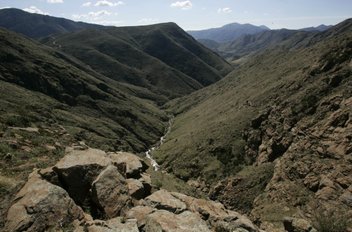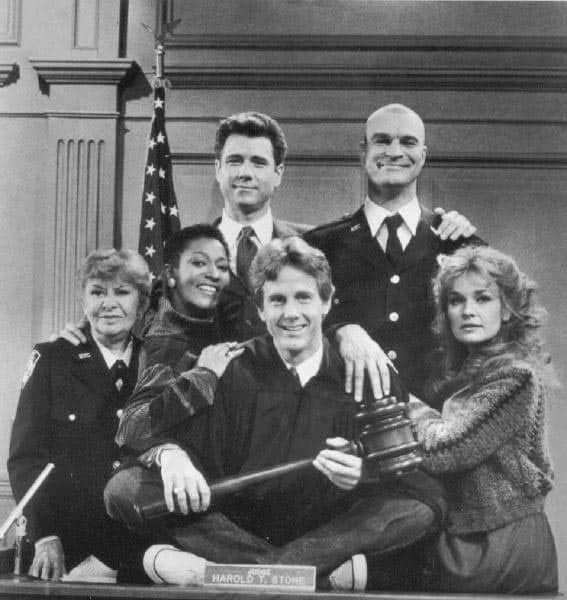
When we sometimes tire of our “word wars” here, we need to remember that they are just one manifestation of broader holy wars being waged in and around our public lands.
Long Road to War
Utilitarian ideology has been a mainstay in forest policy development since the early 1900s when Gifford Pinchot and Bernhard Fernow introduced forestry into American government. Samuel Hays’ Conservation and the Gospel of Efficiency, alongside David Clary’s Timber and the Forest Service both build on self-righteousness to the point of religious fervor among many who chose to work on the land, notably foresters and engineers, and their evangelists (pundits, professors, etc). Similar books could be written — likely have been — talking about the religious-like fervor of the environmental community. [See, e.g. Environmentalism as Religion, Wall Street Journal, 4/22/2010.]
For many years, what later emerged as forest wars were never more than disagreements between mainstream forestry practitioners and malcontents like John Muir, Aldo Leopold and Bob Marshall. Such “disagreements” were deep-seated ideological splits, but contrarians of that era didn’t have the political/legal muscle to make for war. Later, however, the very same disagreements intensified into ideological war with the dawn of the environmental movement.
Environmentalists gained traction in forest debates, appeals, litigation, etc. after people began to wake up to environmental concerns in the late 1960s. The first of a series of Wilderness Acts became law in 1964. The Endangered Species Preservation Act of 1966 predated and set a stage for the Endangered Species Act of 1973. Earth Day began in 1970. In 1969 the National Environmental Policy Act (NEPA) became law. In 1976 The National Forest Management Act (NFMA) and the Federal Lands Policy Management Act added to the mix. The environmental battles gained legal footing. But it is not clear that the legal footing was ever recognized, or at least accepted by the US Forest Service. At least if actions speak louder than words, we must question whether the Forest Service and its USDA overlords ever accepted these legislative mandates.
Disdain for legislative mandates runs deep, but there is an alternative path — a road not taken. Sally Fairfax set a stage for continued disgust for NEPA among forest practitioners with her 1978 Science article titled A Disaster in the Environmental Movement. Countrast Fairfax’s view with that from Jim Kennedy’s NEPA note: Legislative Confrontation of Groupthink.
Environmental Wars
Beginning in the 1970s, environmentalists waged war on timbering, grazing, road building, mining and oil & gas development, developed recreation, and more. Warriors on the “enviro” side typically vilify corporations, else government “lackeys” for the corporations. Warriors on the practitioner side vilify the enviros. In war there is little room for thoughtful discussion or dialogue. The rift between the two camps will likely remain very deep for a long time.
It is not clear that the Forest Service ever gave much heed to the “legislative confrontation of groupthink” ideas in NEPA. It seems that the Forest Service has been evading/avoiding NEPA responsibilities from the get-go. They continued “go-go timbering” up to the point of shutdown following the Monongahela and Bitterroot controversies. After things were sort-of opened up again via NFMA, the Forest Service wanted “once and for all NEPA”, i.e. the forest plan would be a catch-all NEPA container, allowing all projects to flow without any further NEPA review. When that didn’t work, the Forest Service played various shell-games pointing either upward (e.g. forest plans, regional plans) for NEPA compliance, else downward toward projects depending on what was being challenged. Finally, during the Bush/Cheney period, they sought to “categorically exclude” as much as possible from NEPA review.
In 1999 I wrote up a little thing titled Use of the National Forests. I noted four distinct periods of Forest Service history: Conservation and “Wise Use” — 1900-1950, Multiple Use — 1950-1970, Sustained Conflict — 1970-2000, and Collaborative Stewardship — 2000+. Although we might quibble over the dates as well as the categories, I now realize that I was over-optimistic as to the dawn of the Collaborative Stewardship era. At minimum there was a dramatic backlash — not necessarly against collabortion but clearly against environmetalism — commencing with Bush/Cheney Administration and their ABC (“anything but Clinton”) campaigns. The Bush/Cheney war on the environment was a reenactment of an earlier war waged by the Ronald Reagan Administration.
Bob Keiter (Univ. of Utah Law School) chronicled the emergence of both ecological awareness and collaborative stewardship in Keeping Faith with Nature. Keiter later chronicled the Bush/Cheney reactionary footnote in a 2007 article, Breaking Faith with Nature. Taken together, the two trace certain aspects of emergent gospels that were part of the ideological wars. The former traces what I’ll call the “ecosystem awareness” movement in the Clinton era of government, and the second the Healthy Forests Initiative and the Healthy Forests Restoration Act reactions during the Bush/Cheney era.
An era of “collaborative stewardship” may yet be emerging, albeit slowly and as already seen, with pushbacks. Enviros are still quite leery of “collaborations” and high-sounding agency rhetoric. They are warriors, after all. So the wars are not yet over, and may not be for a very long time. Timbering continues, albeit a a much lower volume than in the go-go days, and reframed as “ecological restoration” or “forest restoration”. New forest evangelists appear on the stage. Now we have both Wally Covington and Jerry Franklin preaching the gospel of forest restoration. I’ll leave it for further discussion as to how the two brands compare, and as to who buys into one, the other, both, or neither.
Other Wars
Even if wars between environmentalists and industrial and government practitioners were to ever end, these are just the tip of an iceberg of forest wars. We must add in the budget and staffing wars (hereafter budget wars) that have been ongoing in the Forest Service for a long time. Timber and Engineering reigned supreme in budget wars for many years, particularly after World War Two and the housing boom that fed rapid increases in timbering and associated road-building after WWII. Recreation, Wildlife, Soil and Water, even Fire, Personnel (later, “Human Resources”), Planning, Budget, Fiscal, State and Private Forestry, etc. were always struggling for funds. After go-go timbering days were a thing of the past — i.e. Environmentalists effectively shut down “go-go timbering”, Recreation and Fire gained an upper hand in budget wars. Somehow Engineering always seemed to keep its share of the money. [Note: Someday, maybe I’ll get these budget categories approximately right. For now, they are “good enough for government work”]
Finally — not trivially — Public Lands Wars have raged more of less continuously for many years. Remember the “Sagebrush Rebellion” and the so-called “County Supremacy Movement”? Now those have transformed into more of a “States’ Rights” movement. In all cases, part of the action has been an assault on federal lands.
I’ve probably missed some of the “wars” here. But if I’ve captured any of this even partially correctly, the landscapes, biophysical and political, have been transformed in the process. Some argue, as did Fairfax way back when, that the legal-administrative gridlock that has been a reality in federal lands management during the last 30-40 years, has done significant harm to the environment, and only resulted in wasted paper (EISs and dollars/time spent on forest planning, project planning, related NEPA work, appeals and litigation). Others like me argue that sometimes it is necessary to grapple with vexing social issues, even wicked problems in a very public way. Such “civic discovery” is a necessary part of a working democracy. Would that we could move from “war talk” to “fierce conversations“.
Related:
NEPA is Not the Problem, Forest Policy – Forest Practice, Oct 2007
The Blame Game






